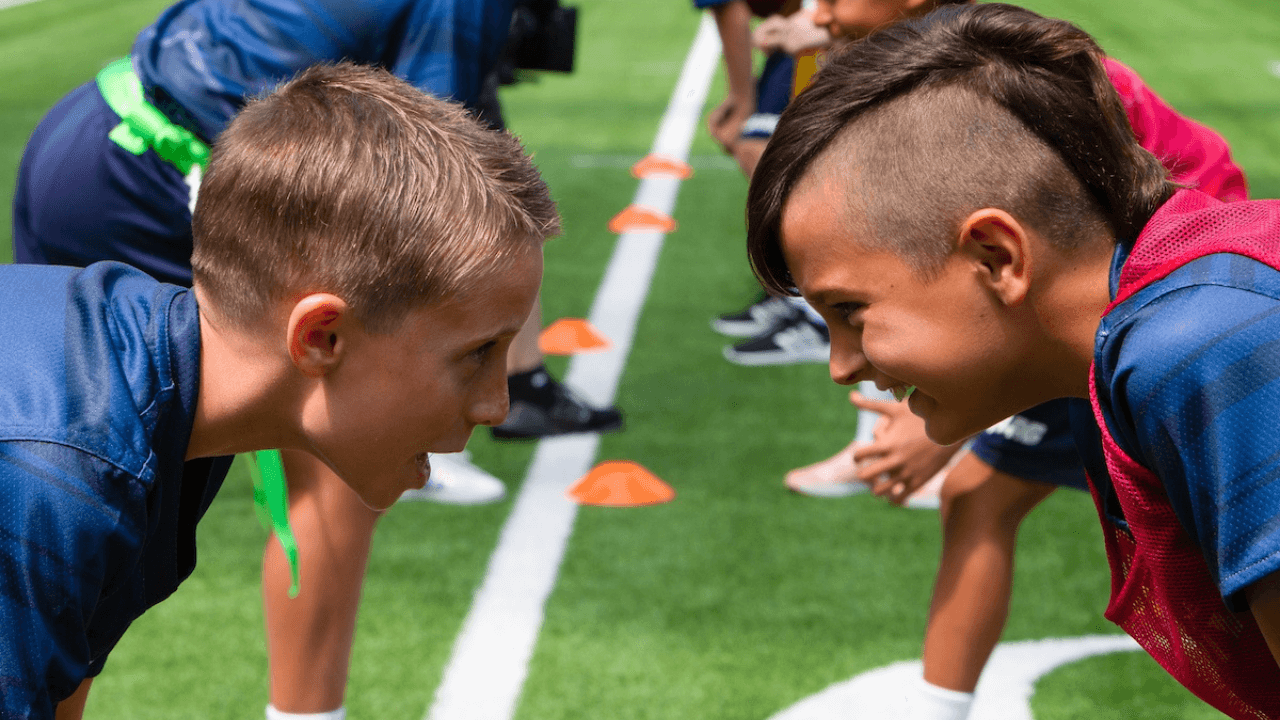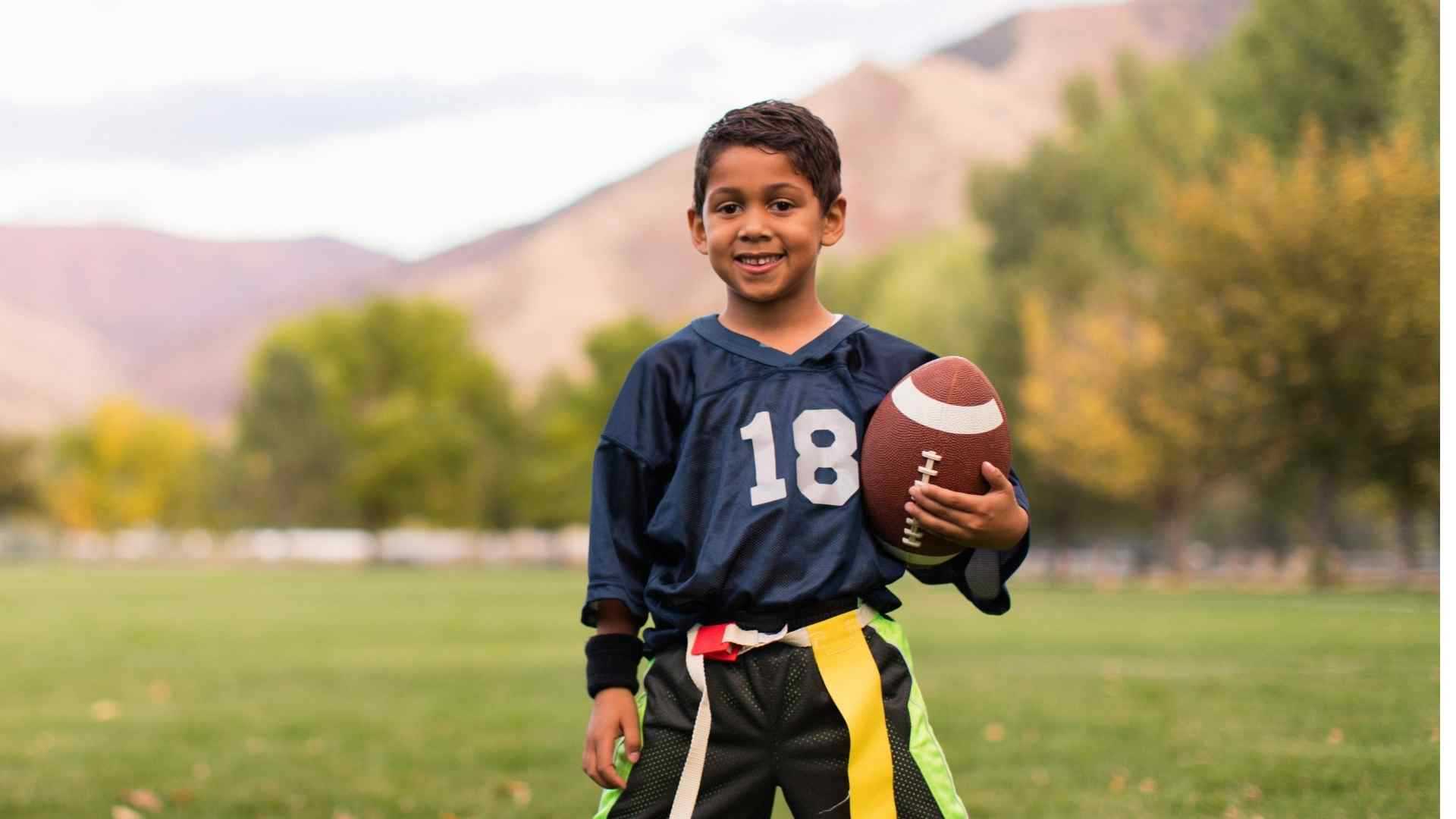The Rules of Flag Football — Explained
None of the contact, all of the fun
Sue Pierce
| 5 min read

MOJO
Flag football is one of the fastest growing sports in the country. No surprise there – it combines speedy athletic moves with teamwork and safety. It’s a parent’s dream come true.
Few know this better than Patrick Williams. Williams played tackle football starting at 4 years old, continuing through high school, college and two years semi-pro in Canada.
When his two young sons showed interest in tackle football, though, he hesitated. “There is too much unnecessary risk of injury,” he says. (Williams says he’s suffered nine concussions in his career.) His passion for the sport and for the safety of his sons inspired him to start Blue Chip Youth Sports, which launched with one NFL Flag football league in Pasadena and now runs 13 leagues throughout Southern California.
Here, Williams highlights the main rules of flag football for all parents, kids and everyone in between.
The basics
The rules of flag football can vary from league to league. NFL Flag, the largest flag organization in the US, provides a standard rule book for all of its teams. They play five on five – while some leagues outside of NFL Flag play seven on seven.
The game is played on a smaller field than the 100 yards NFL fans know and love. Size varies from league to league – NFL Flag plays on a 70-yard field with two 10-yard end zones. Why the smaller field? Fewer players need less room.
A flag football game is played in two halves, usually 15 to 25 minutes long. It starts with a coin toss (meaning there’s no kick-off). The winner of the coin toss starts the game at their own 5-yard line – and begins the battle across the field to the endzone.
Playing it safe
The number one rule of flag football is no contact – no blocking, no tackling, no diving… no nuthin! Safety is the priority. Players wear belts with two flags hanging at their hips. To stop a play, a defensive player must pull one or both flags off their opponent’s belt. If a ball is fumbled, it’s dead. There’s no diving for loose balls.
Some leagues don’t even have the center snap the ball between their legs, but NFL Flag doesn’t see this as a safety issue. They start each play that way.
“There’s no contact,” Williams explains. “Nobody can even line up directly over the center.”
Turns out that removing contact can lead to more fun.
“Every kid wants the ball,” says Williams. “In flag football, it doesn’t matter if you’re big, little, fast or slow – you have the same opportunity to get the ball as everybody else.”
Added bonus: No contact opens up the sport to more kids. “Everybody can play,” says Williams.
Scoring
In most youth flag football leagues, a quarterback has seven seconds to pass the ball. A QB can’t run unless the ball is handed off first. Only forward passes and direct handoffs are allowed – no wacky backward or lateral tosses you might see on TV. But any player is an eligible receiver. “Everybody can go out, catch a pass and score touchdowns,” explains Williams, “except for the quarterback.”
Flag football uses the four-down system that you’ll recognize from tackle football – with some adjustments. NFL Flag gives teams four downs to cross the midfield and three downs to get to the endzone. A resulting touchdown is six points. After the touchdown, the scoring team has the chance to get one extra point from the 5-yard line or two extra points from the 10-yard line.
Defense
Because there’s no way to physically stop an offensive player, it’s crucial to know how to properly pull a flag.
“You want to keep the offensive player’s hips in front of you at all times, so you can reach out and pull the flag,” says Williams. Grabbing the flag towards the top of the belt will make sure it comes out. He adds, “You don’t want to just slap at it.”
Most teams use either man-on-man defense – guarding one player – or zone defense – guarding a certain section of the field. Williams prefers to stick to zone defense with younger kids. “I teach them that they’re responsible for an area,” he says. For players 10 and up, he switches to man-on-man. “They’re more athletic by then and they have more understanding of the game.”
Penalties
Despite all efforts to keep contact to a minimum, plays can still get rough — and penalties will be called. Blocking, holding and pass interference are just a few that will result in a loss of yards or an automatic first down. Younger kids often jump before the ball is hiked which results in a false start.
Flag guarding – one of the most common penalties – is when a player tries to prevent their flag from being pulled by stiff-arming a player, smacking someone’s hand away or shielding their own flag. “I always teach my kids to run like they’re in track — to keep their arms up,” says Williams. “That way there’s no tendency to put your hand down.”
A quarterback can get called for illegal running. Defense will get dinged for illegal rushing. Like tackle football, the list of penalties is exhaustive. NFL Flag compiled them all here.
For more flag football basics, check out:




